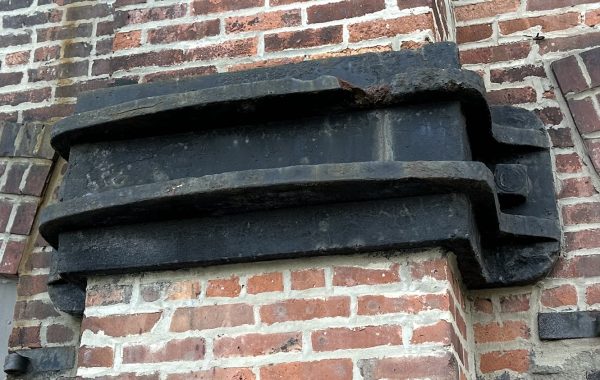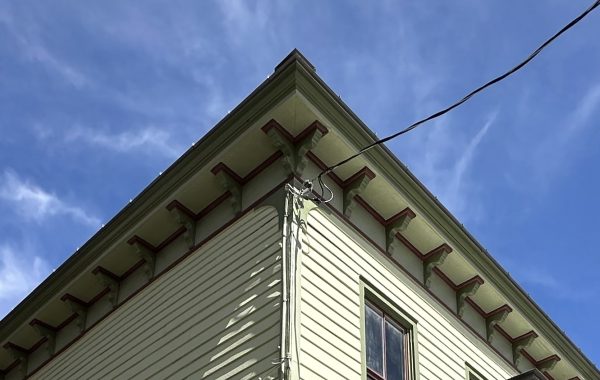The first step to addressing a problem is to admit it exists. Brownstone stinks and it’s a huge problem in New York historic preservation.
I made a brief joke on this topic last winter, but take a look at this:
That’s a piece of one stone in a wall in Brooklyn. It’s a 140-year-old building that has thick brownstone veneer over the entire outer surface. And, surprise!, the stone is failing. The rough part at the far right of the photo is how it all looked once: tooled by the masons to a rough texture for a rustic appearance. (Brooklyn’s rustic, right?) The remainder of the stone has lost between 1/4 and 1/2 inch thickness from its surface, with more of the stone behind loose and ready to fail from heavy rain, or some freeze-thaw cycles next winter, or possible a ill-tempered glance from a passer-by.
The problems with brownstone as a building material are well known, and I’m not going to repeat all of them here. Suffice to say, it stinks. It should never have been used anywhere, but using it New York’s climate – with freeze-thaw cycles nearly every day in the winter and 46 inches of rain per year – was an immensely stupid mistake. That mistake is long past, but the problem I want to discuss is current: what do we do with brownstone-veneer buildings?
Almost all of the brownstone quarries are closed. You know why? Because it’s terrible stone, so the market for it has disappeared. So replacing the falling-apart stone with new stone is difficult and expensive, although it can lead to good results…for a while. And then the new stone will start to deteriorate. Most repairs are made with substitute material: cast stone (AKA architectural precast concrete), stucco, and stucco-like patching compounds.
I’ve been leading up to a question and it’s this: what is the purpose of historic preservation? In my opinion, it’s to preserve part of our shared culture through the preservation of the biggest physical artifacts in everyday life, our buildings. The difficulty comes in what that actually means when we work on old buildings. Are we saving the appearance of the individual buildings from the street, the physical material, the general feel of the streetscape and cityscape, or something else? There are rows of brownstones – entire block fronts in some parts of Brooklyn and the Upper West Side – that have been “restored.” We don’t see brownstone there, we see brown stucco. Because brownstone is so soft, carvings in to tend to be fairly crude compared to carvings in limestone or granite, but the stucco details are even cruder. So we haven’t really preserved the appearance of the individual buildings, and we certainly haven’t saved the material. We have, to some degree, saved the streetscape.
I’m being critical, but I really don’t know what a better answer would be. Brownstone rowhouses are valued more for their space and interiors than for their facades. As a matter of fact, one reason so many of them need restoration now is that they were altered (or defaced, depending on your preferences) in the first half of the twentieth century. It’s not hard to find criticisms of the stone on aesthetic grounds rather than the technical yes I’m talking about.
We have the following feasible options:
- Keep the stone exposed. It looks bad as it falls apart, it becomes unsafe, and there’s not much that can be done in repair other the tooling back the surface, so the exposed face keeps retreating backward.
- Replace the stone with new brownstone. We can spend a lot of money making a 150-year-old mistake all over again.
- Cover the stone with a matching material, as is common today. We keep the color and, to some degree, the texture, but give up authenticity and create a whole lot of new maintenance.
- Admit that our ancestors messed up, remove the veneer, and replace it with better stone. This is physically feasible, but expensive, not socially feasible, and not likely to be approved for landmarked buildings.
Let me rephrase this three options, in terms of what they mean:
- Keep the material and lose the appearance.
- Keep the appearance, lose the material, and be willfully blind to the fact that we’re recreating the problem.
- Keep some of the appearance and lose the material.
- Lose the appearance and material.
Great choices. No matter which one wins, we lose.




You must be logged in to post a comment.